[‘Barnbarnet’ or ‘The Grandchild’ (1918) by Carl Larsson]
Vi är här i Stockholm and I can order any number of coffees and kardemummabullar, say ‘nej, tack’ or ‘no, thank you’ to all sorts of things (receipts, kanelbullar/cinnamon buns, ketchup), and spot words in Swedish which sound like old-fashioned or regional English: flytta - to move or flit, dra - to pull or draw, stoppa - to stop or fill, sluss - lock or sluice, mörk - dark or murky, and barn - child or bairn.
[‘Barnbarnet’ or ‘The Grandchild’ (2025) by me]
And there’s the barnbarn - ‘grandchild’ or ‘child’s child’ - who is crawling, climbing, standing, gurgling, warbling, laughing, smiling, and generally delighting everyone.
In the painting by Carl Larsson, we see Gunlög, his first grandchild, painted in the studio in Lilla Hyttnäs which his wife Karin took over after he had a larger studio built. She moved in with her lovely Singer sewing machine (in the background) and her loom, which is still there - and always lovely flowers.
[pushing the pram on the frozen lake, parents on skates ahead]
Stockholm has been white and cold and icy; we took the bus to Nacka for Tom to prove his Scandinavian credentials by going back and forth from the sauna to the ice hole in the lake (water temperature: 1C). It’s better as a spectator sport.
I like the yellow and green and grey and Falu red houses and buildings which contrast with the snow. There are several parts of Södermalm where we are staying which still has C18 wooden Falu red houses perched on granite rocks like a series of Noah’s Arks (many rebuilt in the 1960s). We are still wondering who uses the double doors on this one which is on Åsögatan - Carl Larsson lived just up the road in the mid 1880s.
[Forsgrénskabadet (1939)]
It’s a great part of Stockholm, just south of Gamla Stan, the old town, with everything you need for a good life. A beautiful 1939 municipal swimming pool and huge library (amazing children’s section) in Medborgarhuset, wonderful views over the harbour with the ferry to Finland just below should you wish to hop on a boat through the vast archipelago, beautiful tiles in metro stations, buns, bread, coffee and, at the moment, semlor (Lent buns) at every turn, and cheap packs of cardamon seeds ready-podded (a revelation after always having the faff of removing the green pods at home).
[metro tiles]
The old buildings have elegant curving stone staircases, tiny old-fashioned lifts which are a squeeze for even two people, and the flats have tall ceilings, decorative cornices, huge windows to let in as much light as possible, warm parquet floors, ultra-tall kitchen cupboards, and lots of shades of gentle Gustavian grey and blue-grey.
[Svenskt Tenn]
We’ve made a trip to what is probably my all-time favourite home/interiors shop: Svenskt Tenn. It’s the most wonderful combination of colour and eclecticism.
[‘New Orleans’ by Josef Frank]
This is the fabric I would have for curtains if I were very rich. They would keep me entertained for many years.
Svenskt Tenn is also serious about Swedish craftsmanship (svenskt tenn means Swedish pewter, which is where it all began) and a whole roster of famous names has worked for the company since it was founded in 1924. This includes Margit Thorén whose ‘Schackruta’ rug from the 1940s, made using the traditional Swedish rag rug method with long strips of waste fabric woven on a linen warp on a loom, is well-known. The store has a little exhibition of new rugs inspired by her chessboard design made in Ukraine using leftovers of Josef Frank fabrics. It’s good to see such an upmarket shop supporting both old crafts and Ukrainian weavers.
Just along from all this is the Märta Måås-Fjetterström showroom, famous in Sweden for its seriously good tapestries, wall hangings, and rugs.
[‘Crocus, blå’ by Ann-Mari Forsberg (1916-1992), des 1945]
This is a small ‘Crocus’; it can be made much bigger and in different colourways with the crocus repeat going all the way down a table or over a floor. I like the way it works both ways up. Again, years of textile entertainment.
And there’s plenty more of that in Stockholm. I went to a fantastic yarn shop which was actually slightly overwhelming and paralysing for a British knitter deprived of actual bricks and mortar knitting shops. It’s just not the same online. Ever.
I’d also recommend the Nordiska Museet for its excellent chronological displays of everyday and domestic objects - a kind of V&A - and a nice reconstruction of a 1940s Folkhemmet/People’s Home apartment, its collection of dolls’ houses, series of table settings through the centuries, and all sorts of old crafts from birch bark shoes,
to these Swedish mittens from Dalsland with religious motifs: churches, angels, Jacob’s Ladder, Wise and Foolish Virgins, Christ in the guise of a rooster. I don’t suppose the pattern is on Ravelry.
And I saw this dress which was bought by Anna-Lena Wibom in a London street market and worn to the Beatles’ first concert in Stockholm in 1963.
Oh yes, it’s a good place, Stockholm.
Happy Sunday!



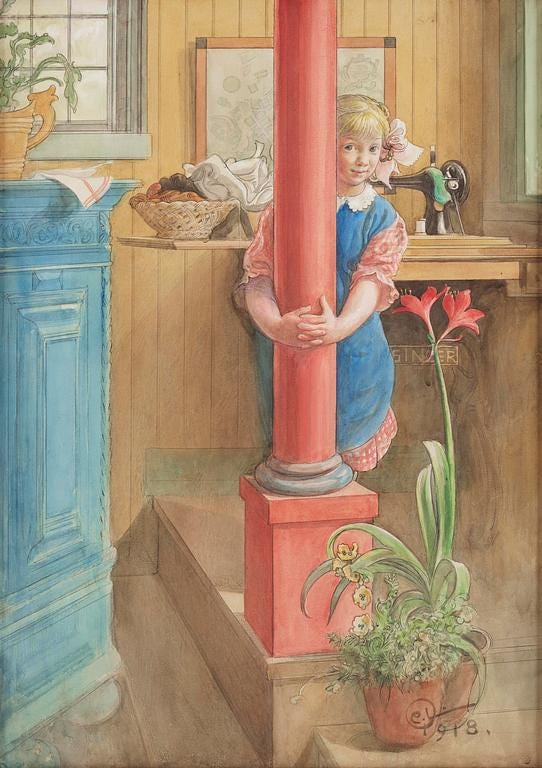
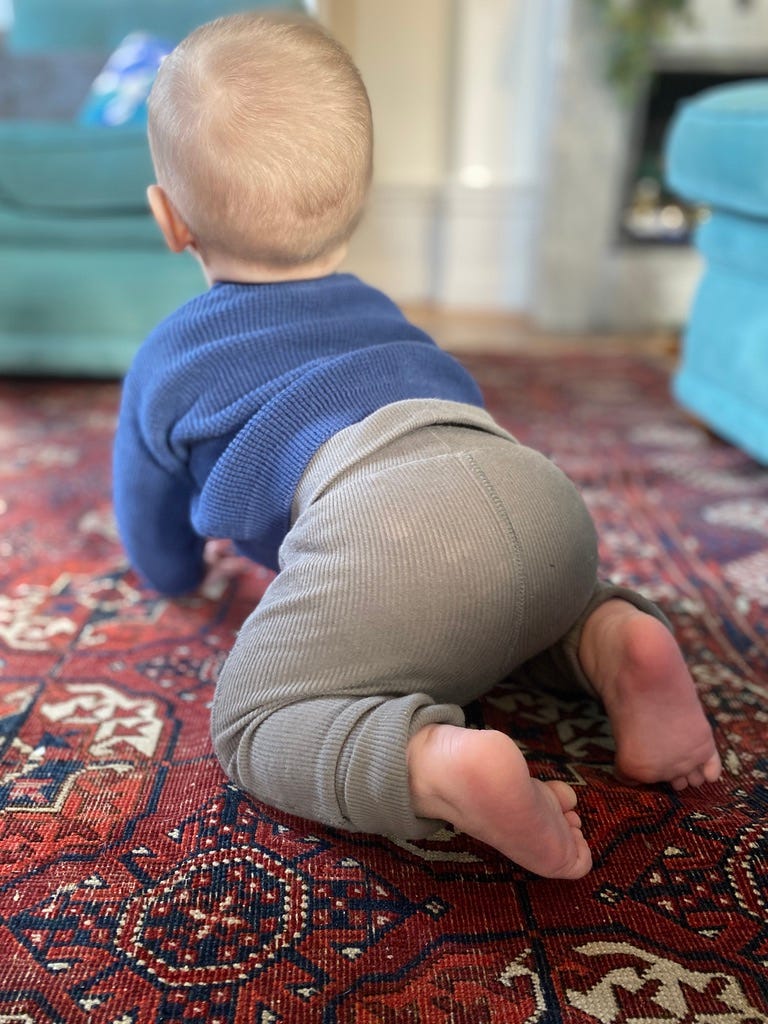

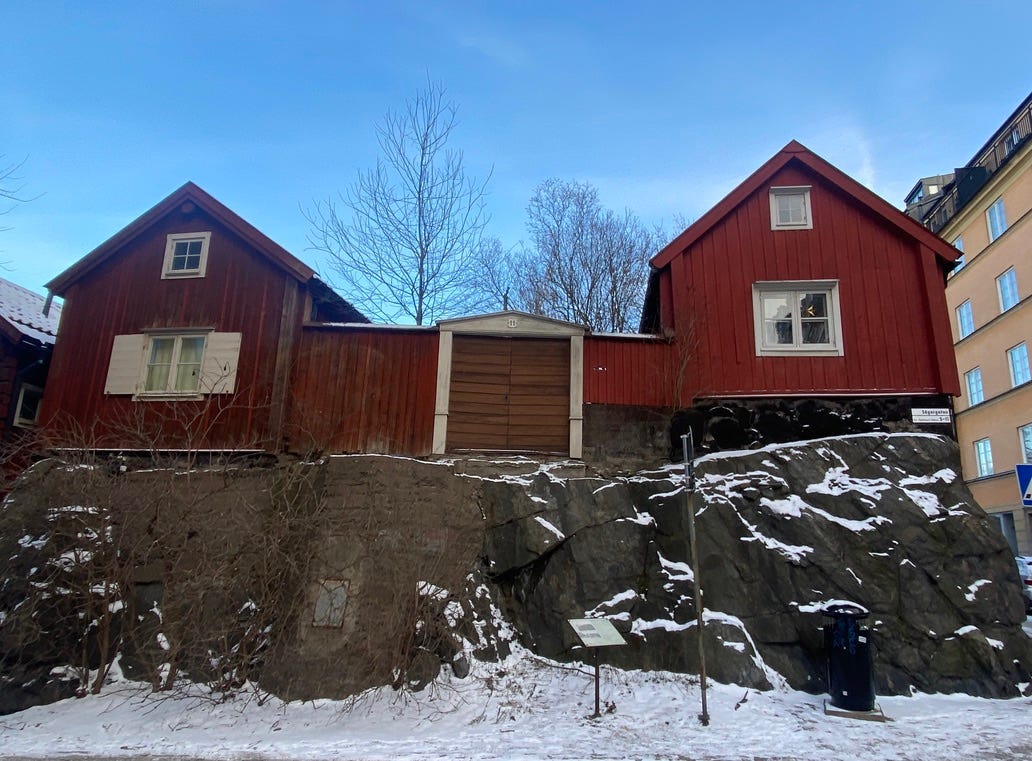
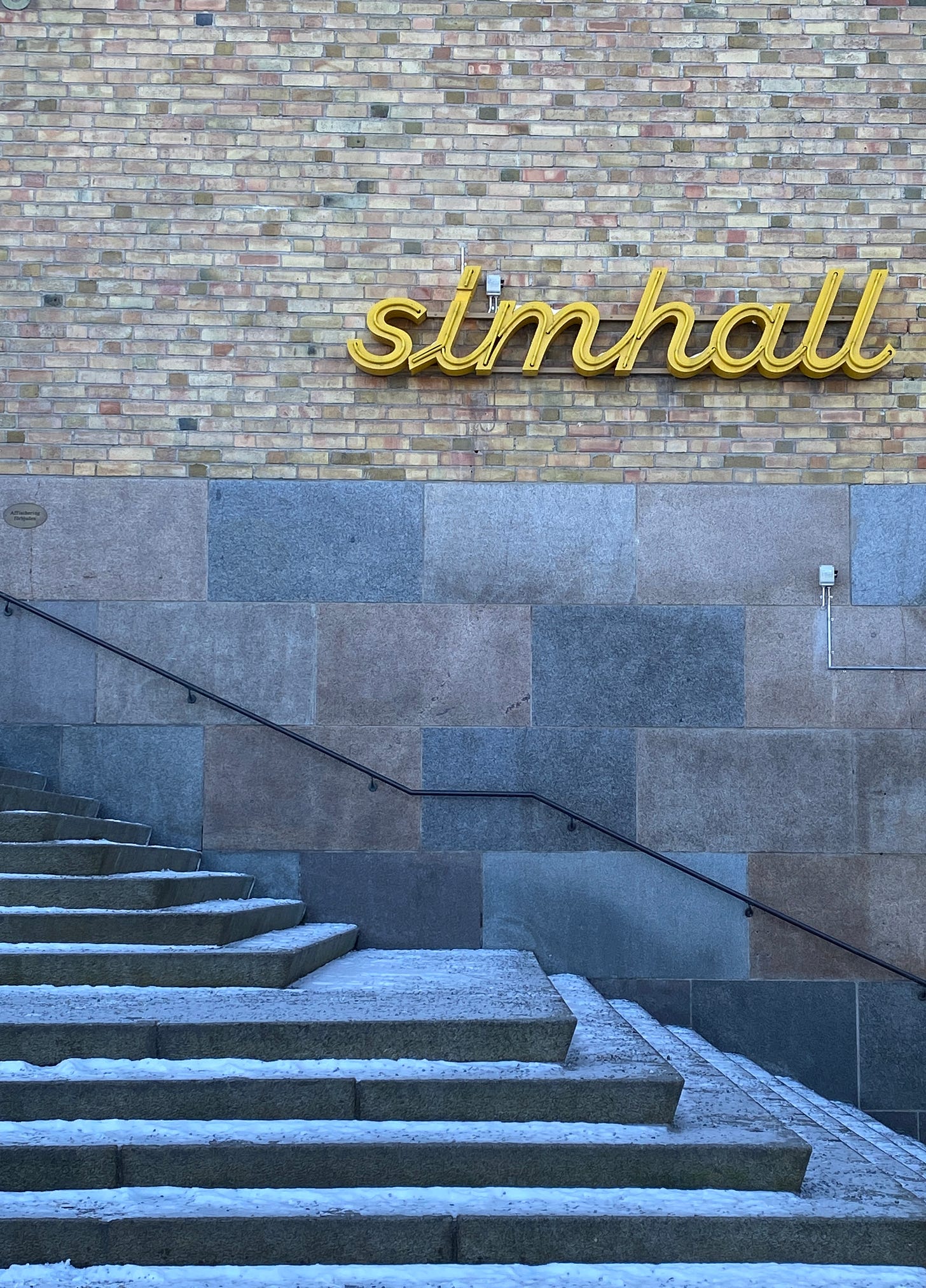
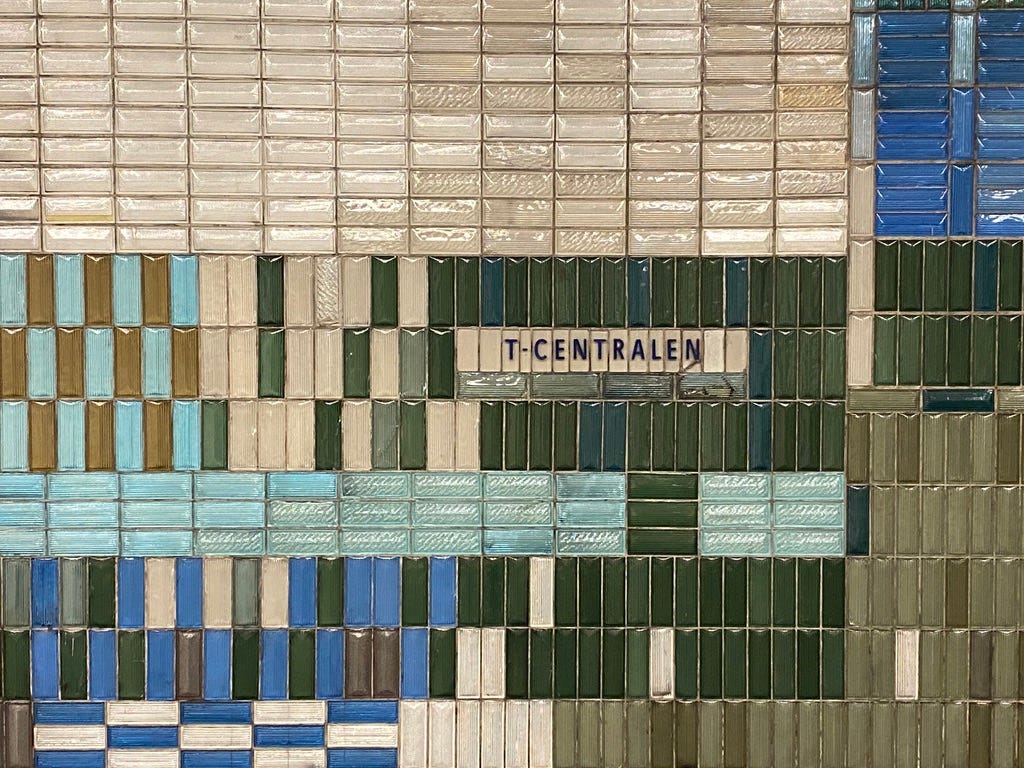
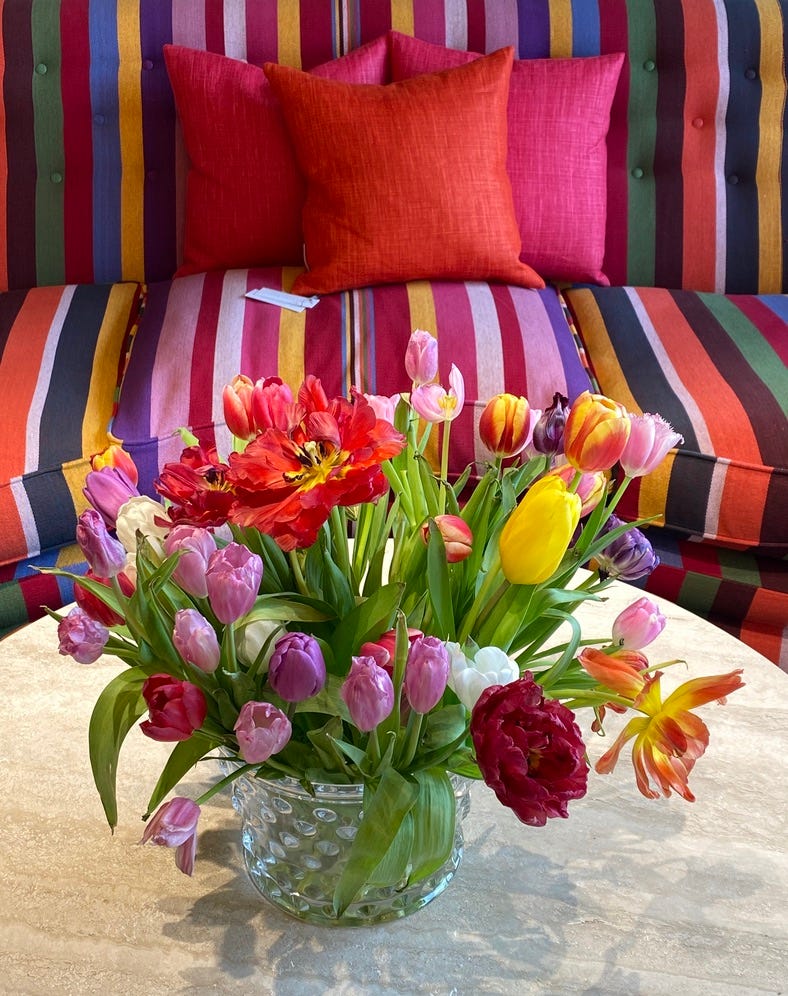
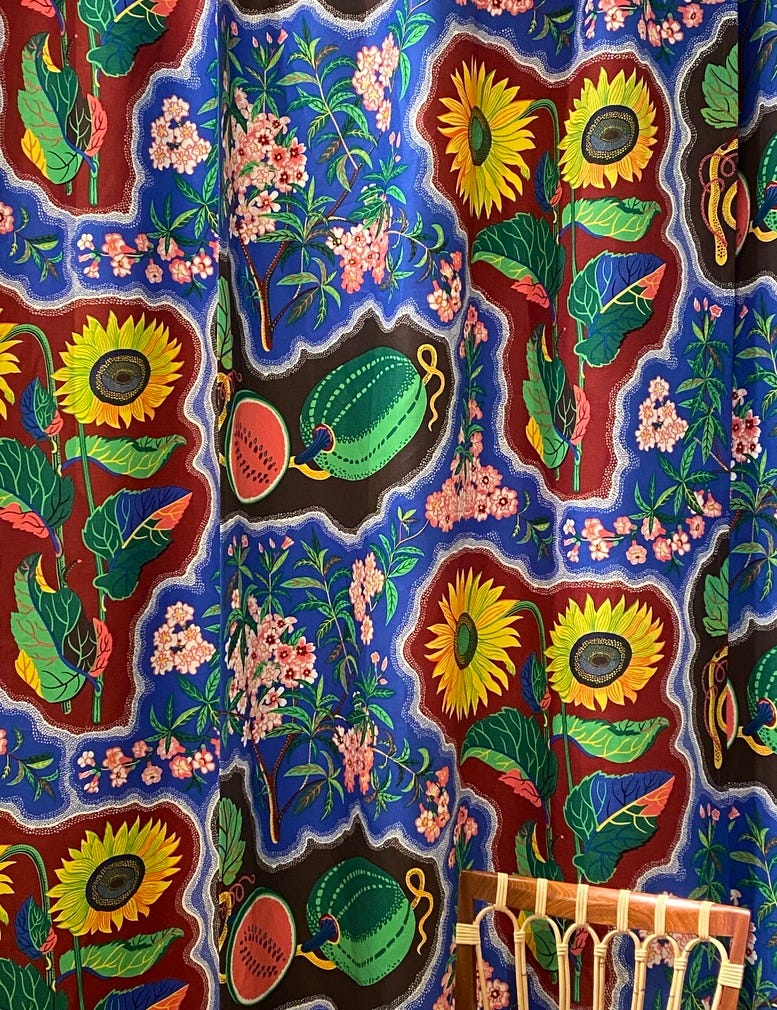



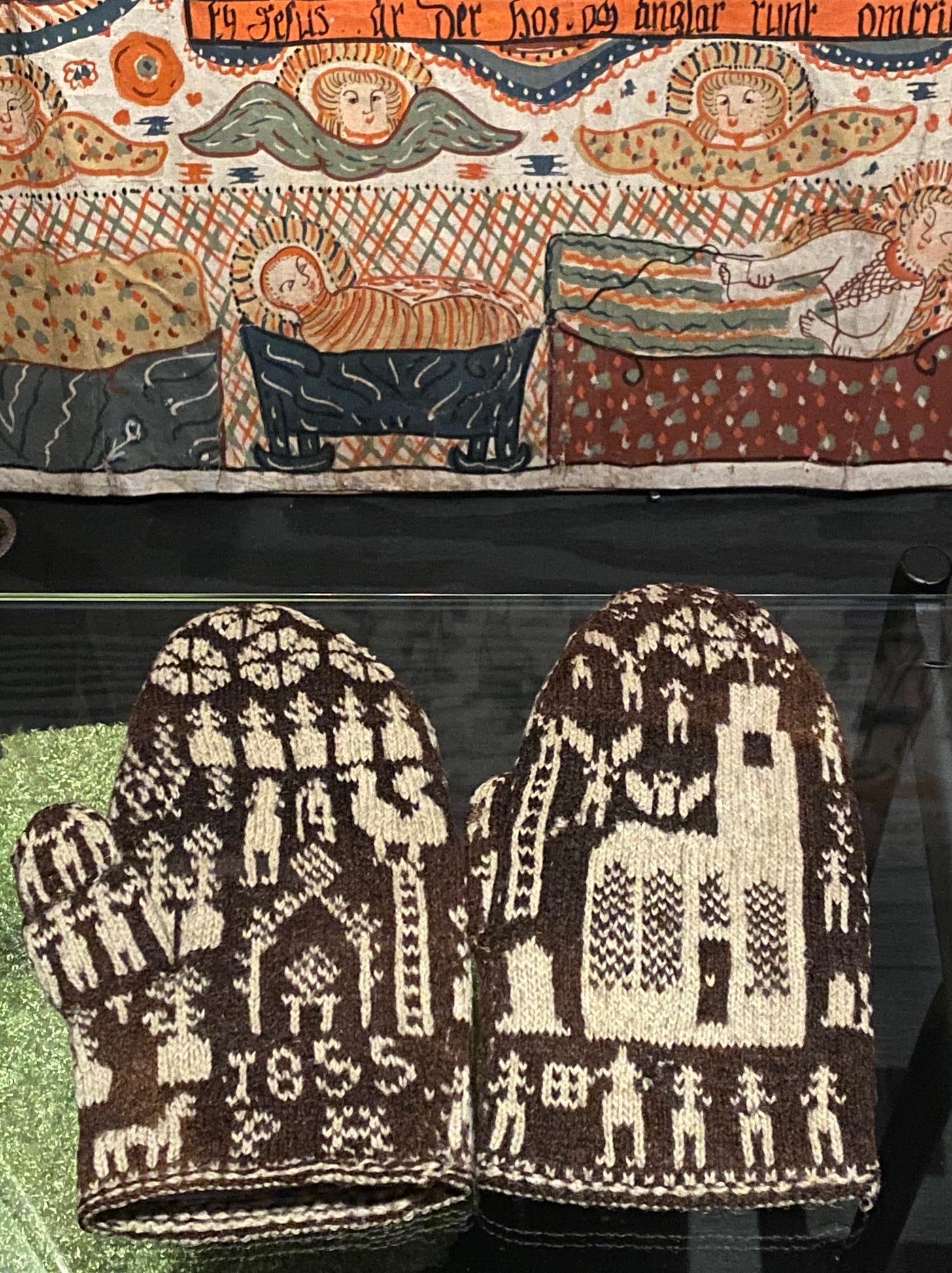

My impression of Sweden as a colour chart of greys, based in all those Scandi noirs I binged on, has just been blown away. Those gorgeous colours!
As for the yarn shops… Check out Ewe & Ply (Shrews & Oswestry shops) who deliver. Ethically sourced yarns always. Run by three wonder women whose after service is worthy of a medal.
Thank you for opening doors of wonderment. I have put Sweden on my bucket list.
It sounds wonderful. My only visit to Sweden was a week of lectures at the university in Halmstad, but I did open 24 hours in Gothenburg which I LOVED! I came back with 4 pairs of gloriously warm and furry boots. It must have been about 30 years ago.....but this post made me think of it again. Thank you!